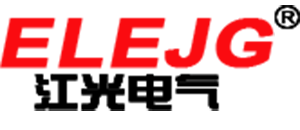In the fields of industrial manufacturing and precision machining, the clarity, durability, and fineness of product identification directly affect the brand image and product traceability efficiency. Traditional marking methods such as ink printing or mechanical engraving have gradually been replaced by more advanced laser technologies. Among them, the UV laser marking machine, with its unique advantages, is becoming a star device in the precision machining field. This article will take you on an in – depth exploration of the principles, advantages, and practical application scenarios of this technology.
The UV laser marking machine uses an ultraviolet laser with a wavelength of 355nm as the processing light source and belongs to the “cold processing” technology. Different from traditional infrared lasers (such as 1064nm fiber lasers), its ultra – short wavelength can directly break the molecular bonds on the material surface instead of achieving marking through heat ablation. This characteristic enables it to achieve micron – level high – precision marking with almost no thermal impact.
The minimum spot diameter can reach 15μm, and it can easily achieve a fine marking with a line width of 0.01mm, which is suitable for micro – components such as chips and wafers.
It can handle materials that are difficult to mark with traditional lasers:
- Plastics: PET, ABS, PC, etc. (to avoid thermal deformation)
- Glass: Crack – free engraving on mobile phone covers and optical lenses
- Metals: Non – peeling marking on anodized aluminum and plated materials
- Special materials: Ceramics, sapphire, flexible circuit boards
It does not require inks or chemical reagents, complies with RoHS standards, and the marking speed can reach 7000mm/s.
The marking formed through molecular – level modification is high – temperature – resistant and corrosion – resistant and can pass the ISO/IEC durability test.
- Marking two – dimensional codes (<2mm²) on PCB boards for chip – level traceability.
- Precision etching of the insulating layer of flexible circuit boards.
- Permanent serial number marking on surgical instruments to meet FDA sterilization requirements.
- Invisible engraving of anti – counterfeiting and traceability codes on medicine bottles.
- Non – damaging laser logos on cosmetic bottles.
- Environment – friendly printing of production dates on food packaging.
- Micro – engraved anti – counterfeiting codes on precious metals.
- Nano – level engraving of diamond girdle codes (depth < 5μm).
- 3W: Suitable for soft materials such as plastics and films.
- 5 – 10W: A general – purpose configuration that can handle metals/glass.
- 15W+: For industrial – grade high – speed production line requirements.
High – quality galvanometers (such as German SCANLAB) combined with F – Theta lenses ensure that the full – field marking consistency error is < 0.1%.
It supports human – machine interaction designs such as a visual positioning system (CCD automatic alignment), MES system docking, and multi – language operation interfaces.
Multi – wavelength equipment combining green/infrared lasers to meet the mixed processing needs of complex materials.
AI defect detection + automatic parameter optimization system to increase the yield rate to over 99.9%.
Picosecond – level pulse width (10^ – 12 seconds) further reduces the heat – affected zone and expands into new fields such as biomedicine.
With the extreme pursuit of precision manufacturing in “Industry 4.0”, UV laser marking technology is re – defining the standards of product identification. Whether it is to improve production line efficiency or achieve value – added functions such as anti – counterfeiting and traceability, this technology shows strong vitality. For enterprises planning to upgrade their production lines, investing in a high – performance UV laser marking machine may be a key step towards intelligent manufacturing.


